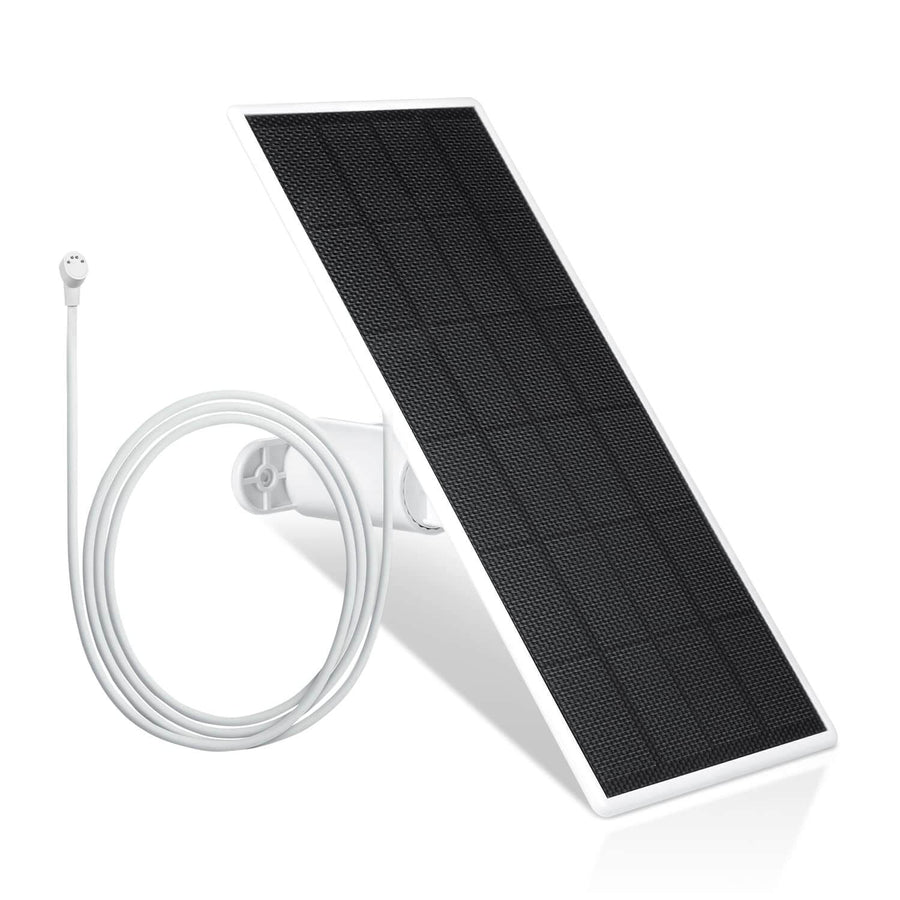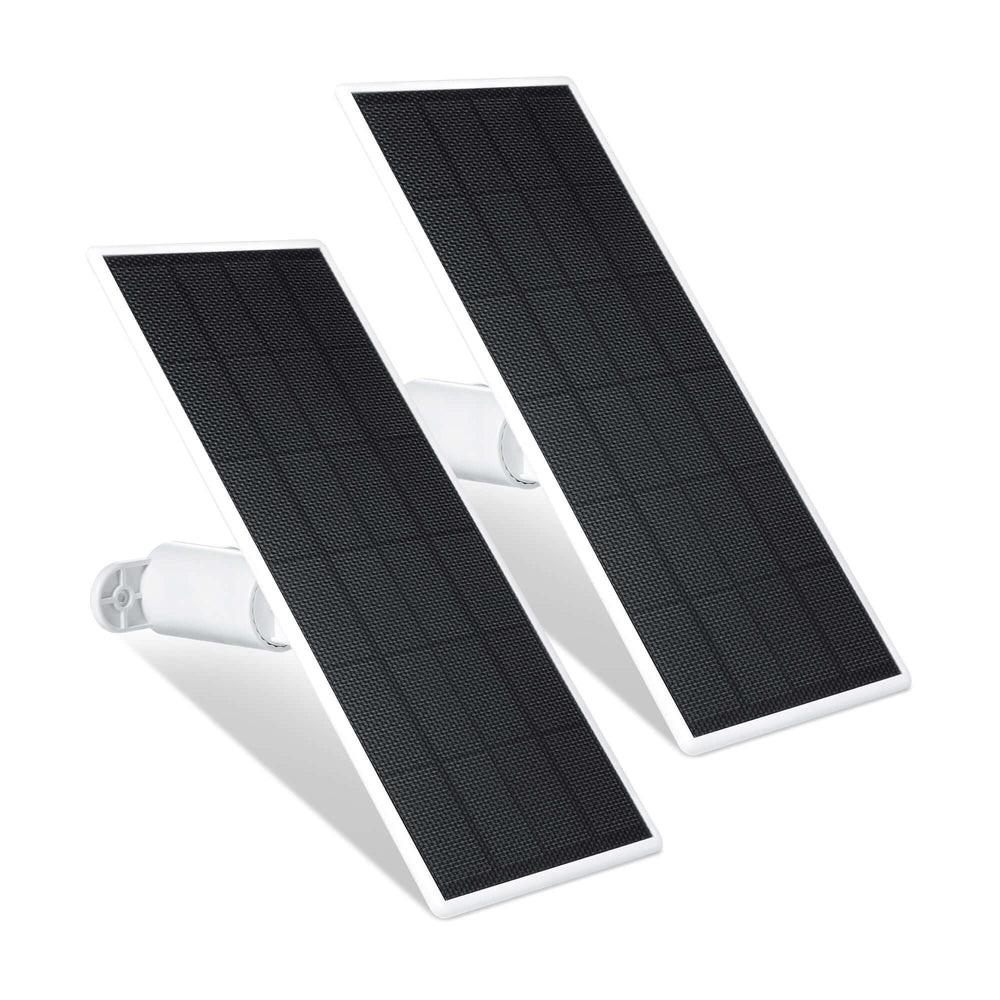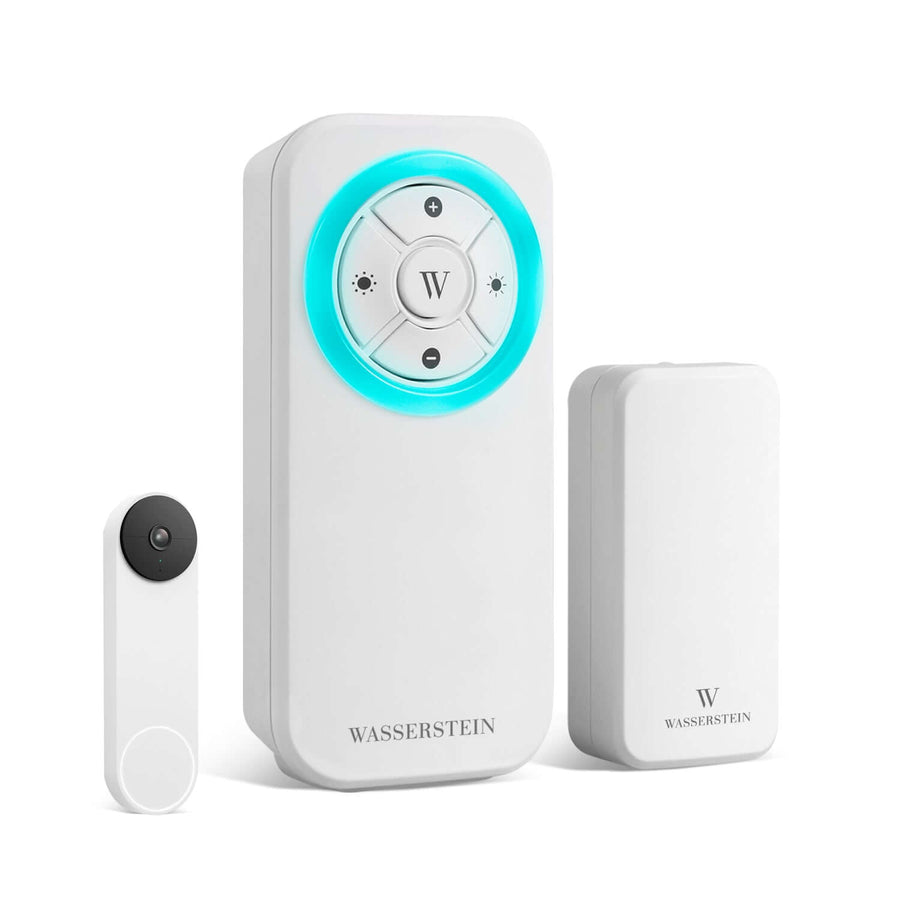Dome vs Bullet Camera: Which One is Right for You?
Security cameras come in different shapes and sizes, the most common ones being the dome and bullet cameras. In the bullet vs dome camera debate, choosing between the two for your home or business can be a challenging task. With both dome and bullet cameras offering distinct advantages, understanding the differences between these two popular camera types is essential for optimizing your security system. This guide will explore every aspect of the dome vs bullet camera debate, helping you make the best decision for your specific needs.
What are Dome Cameras?

Dome cameras are surveillance cameras housed in a dome-shaped enclosure. The name “dome camera” comes from this very dome shaped housing, which not only adds aesthetic appeal but also makes the camera less noticeable. Dome security cameras are often used in areas that require discreet or covert surveillance, such as lobbies, retail stores, hotels, and office interiors.
Design & Structure
Dome cameras feature a compact and aesthetically pleasing build that blends seamlessly into ceiling spaces. Their dome-shaped housing helps conceal the camera’s orientation, making it difficult for intruders or employees to determine where the lens is pointing. This can be especially valuable in retail or hospitality settings where subtle monitoring is desired.
Key Features
Dome surveillance cameras come equipped with a variety of advanced capabilities that enhance both performance and security coverage. These features contribute to their popularity in professional surveillance setups:
- Wide angle lenses: Ideal for monitoring broad spaces like lobbies, hallways, and open floor plans.
- Dome enclosure provides vandal proof features: The tough exterior shields the lens from tampering and accidental damage.
- Indoor and outdoor use: Many dome camera models are weather-sealed, allowing for versatile deployment.
- Night vision and infrared LEDs: Ensure the camera can capture clear footage even in low light conditions.
- Pan tilt zoom capabilities: Some high-end models offer remote PTZ control, enabling operators to monitor dynamic environments more effectively.
- Discreet appearance: Their low-profile look helps them blend into ceilings, making them less intrusive in customer-facing spaces.
- Smart features: Depending on the model, dome cameras can include motion detection, facial recognition, and real-time alerts.
One of the dome camera pros is their protective design, which makes them suitable for various environments, both indoors and outdoors.
What are Bullet Cameras?

Bullet cameras are easily recognized by their cylindrical shape, which resembles a bullet or tube. These cameras are typically mounted on walls or poles, making them highly visible and often used as a visible deterrent against crime.
Design & Structure
Bullet cameras are designed with a streamlined, cylindrical shape that makes them instantly recognizable and often a go-to choice for overt surveillance. The exposed camera lens makes it easier to manually adjust the camera angle, offering flexibility in targeting specific zones. This adjustability is especially beneficial when surveillance needs change over time or when monitoring entry and exit points. Their shape and size also accommodate larger lenses, contributing to higher image quality and better zoom capabilities.
Key Features
Bullet cameras are designed for maximum visibility and performance in a variety of demanding environments. Their robust design allows for flexibility and adaptability, especially in outdoor and long-range surveillance applications.
- Support for larger lenses: Bullet style cameras can accommodate lenses with longer focal lengths, enabling them to capture detailed images at greater distances. This makes them ideal for identifying faces, license plates, or monitoring across wide perimeters.
- Weatherproof construction: Most bullet camera models are built to withstand harsh weather conditions such as rain, snow, and dust. Many come with IP66 or IP67 ratings, ensuring consistent performance outdoors.
- Infrared and night vision capabilities: These cameras are often equipped with powerful infrared LEDs that allow them to record clearly in low light conditions or total darkness.
- Adjustable mounting brackets: Bullet cameras feature flexible mounting arms that make it easy to point the camera in a desired direction, whether mounted high on a wall or a pole.
- Smart surveillance features: Many bullet cameras include advanced features such as motion detection, real-time alerts, and integration with AI-based monitoring systems.
- Zoom functionality: Some models are equipped with optical zoom, which allows users to zoom in on specific areas without sacrificing image quality.
- Compatibility with diverse power options: These include Power over Ethernet (PoE), traditional wired setups, or even solar-powered configurations, depending on the location and requirements.
Key Differences Between Dome and Bullet Cameras

The differences between the two cameras extend far beyond basic shape or appearance. These two types of surveillance cameras cater to different needs depending on their design, features, and practical applications. Below is a detailed breakdown of how dome and bullet cameras compare across various aspects that are critical to any security system setup:
Design & Appearance
- Dome cameras offer a sleek, discreet design that blends well into indoor environments. Their dome-shaped housing conceals the camera's focus, making it difficult to determine the direction it's pointing—ideal for covert surveillance.
- Bullet cameras, with their cylindrical shape, are more noticeable and are often used as a visual deterrent. Their presence alone can discourage criminal activity due to their overt and authoritative look.
Installation & Placement
- Dome cameras are typically mounted on ceilings or eaves, offering a wider vantage point but requiring precise alignment during setup.
- Bullet cameras are more versatile in mounting, often installed on walls or poles, and are easier to adjust post-installation thanks to their external lens and bracket design, which allows for straightforward alignment and direction of the camera's focus.
- Bullet cameras are better suited for applications where camera angle might need occasional readjustment.
Durability & Weather Resistance
- Dome cameras are often equipped with vandal-resistant features, such as tough polycarbonate housings and sealed designs that reduce damage risks.
- Bullet cameras generally perform better in harsh outdoor conditions. Their robust, weatherproof enclosures are made to withstand rain, snow, dust, and temperature variations.
Field of View & Coverage
- Dome cameras typically provide a wider field of view, making them ideal for covering broad areas such as building interiors, open-plan offices, and indoor hallways. Privacy masking features can also be used to obscure specific sections of the camera's field of view.
- Bullet cameras tend to have a narrower, more focused field of view that works well for capturing distant targets, such as vehicles or people entering a perimeter.
Visibility & Deterrence
- The subtle appearance of dome cameras allows them to operate without drawing attention, useful in retail and hospitality settings.
- Bullet cameras, with their obvious shape and presence, are great for applications where you want people to know they are being watched.
Image & Video Quality
- Bullet cameras can house larger lenses with longer focal lengths, making them ideal for long-range surveillance and capturing fine details like license plates or facial features.
- Dome cameras generally prioritize wide-angle views over distance, capturing clear images of a larger area but with slightly less detail at a distance.
Motion Detection & AI Features
- Both bullet and dome cameras can include smart surveillance capabilities, such as motion tracking, people counting, facial recognition, and integration with cloud-based monitoring systems.
- The specific features available depend more on the camera model and brand than the form factor.
Tamper Resistance
- Dome cameras offer better protection against tampering thanks to their fully enclosed structure and dome cover, which hides and protects the lens.
- Bullet cameras, though often installed out of reach, may be more susceptible to being redirected or damaged if accessed.
Pricing & Cost Considerations
- Dome cameras may involve slightly higher installation costs due to their more complex setup and positioning.
- Bullet cameras are generally easier and quicker to install, which may reduce labor costs. Their exposed design also simplifies maintenance, such as lens cleaning or re-aiming.
Pros and Cons of Dome Cameras
When evaluating dome cameras, it's important to consider their functionality within different security contexts. These cameras excel in discreet settings where aesthetics and wide-angle coverage are key priorities. However, their design also introduces certain limitations depending on the installation environment.
Pros:- Discreet, unobtrusive appearance: Their dome shaped housing blends into ceilings and architectural elements, making them less likely to draw attention.
- Vandal resistant housing: The enclosed dome offers protection against tampering and physical damage, which is especially useful in public areas or vandal-prone zones.
- Great for wide-angle coverage: Dome cameras often include wide angle lenses or varifocal lenses, allowing them to cover a large area from a single vantage point.
- Ideal for indoor spaces: Particularly effective in places like offices, retail stores, schools, and restaurants where aesthetics and discretion are important.
- Covert surveillance capabilities: Because the camera's orientation is hidden, it's difficult for subjects to know where the camera is pointed.
- Multi-functional features: Many dome camera models support pan tilt zoom functionality, infrared LEDs for night vision, and smart AI features like facial recognition and motion alerts.
- Harder to clean and maintain: The dome cover may accumulate dust or condensation, potentially affecting image clarity, especially under bright lighting.
- Dome cameras require more time for precise installation: Ensuring accurate positioning within the dome can be more complex compared to bullet cameras.
- Less suitable for long-range monitoring: While they provide excellent wide-angle views, dome cameras often have shorter focal lengths, making them less effective for capturing detailed images from a distance.
- Potential for glare or IR bounce-back: In low-light environments, the dome's reflective surface can sometimes interfere with infrared performance.
Pros and Cons of Bullet Cameras
Bullet cameras offer distinct advantages for security systems where visibility, range, and deterrence are top priorities. Their straightforward design and ease of deployment make them a common choice for outdoor surveillance, although they do come with a few trade-offs.
Pros:- Visible deterrent to potential intruders: The noticeable, cylindrical shape of bullet cameras acts as a strong visual warning, often discouraging criminal activity before it starts.
- Excellent for long range surveillance: With support for larger lenses and longer focal lengths, bullet cameras excel at capturing detailed images from a distance, making them ideal for large outdoor spaces.
- Easier to install and adjust: The mounting hardware allows for quick, straightforward installations. Adjusting the camera angle is also simpler compared to dome cameras, especially for repositioning.
- Better suited for outdoor conditions: Most bullet camera models are built with durable, weatherproof materials that can withstand environmental hazards like rain, wind, and dust.
- High image quality and zoom options: Thanks to their size, bullet cameras can accommodate advanced optics and zoom capabilities, making them useful for license plate recognition and facial identification.
- Flexible power options: Compatible with PoE, standard power cables, or even solar panels for remote locations.
- Easier to tamper with due to exposed lens: Because the lens is not enclosed in a dome, intruders may try to redirect or disable the camera more easily.
- More noticeable and may affect aesthetics: Their conspicuous appearance may not be suitable for environments where discreet monitoring is preferred.
- Requires more physical space for mounting: Compared to compact dome cameras, bullet cameras need more space for proper positioning and angle adjustment.
- Susceptible to cobwebs or dirt: Their protruding structure can accumulate debris, especially outdoors, which can affect the clarity of the camera’s view if not regularly maintained.
Best Use Cases for Dome vs Bullet Cameras

Whether outfitting a retail store, managing a construction site, or securing a home (whether own or rented), understanding the strengths of different types of CCTV cameras, such as dome and bullet cameras, is key to building a robust security system. Each type of camera is uniquely suited to different environments and purposes, making it important to assess your specific needs before deciding which to use.
When to Choose a Dome Camera
-
Indoor Surveillance:
- Ideal for locations like hotels, schools, offices, and hospitals, where discreet and wide-angle monitoring is essential.
- Their compact, rounded design helps maintain a low profile, making them perfect for interior spaces where aesthetics and unobtrusiveness matter.
-
Discreet Monitoring:
- Best for restaurants, shops, or areas with high customer traffic where you want surveillance to blend into the surroundings.
- Dome cameras are often less noticeable, which makes them a good choice for areas where you don’t want to create a sense of unease or make people feel constantly watched.
-
Vandal-Prone Areas:
- These cameras excel in places such as public venues, elevators, or stairwells where tampering or vandalism is a concern.
- The design of dome cameras often includes vandal-resistant covers, making them a more secure option in high-risk areas.
When to Choose a Bullet Camera
-
Outdoor Areas:
- Bullet cameras are ideal for monitoring driveways, fences, parking lots, and other exterior locations where the camera needs to cover a wide area.
- Their long, cylindrical shape allows for clear line-of-sight monitoring and weatherproof designs, making them well-suited to outdoor conditions.
-
Long-Distance Coverage:
- When you need to capture detailed images from a distance, such as monitoring the front entrance or reading license plates, bullet cameras are your go-to.
- Their longer lens and higher focal points make them particularly effective at surveillance over extended ranges.
-
Areas Needing Deterrence:
- Bullet cameras are often associated with a more noticeable security presence, making them perfect for areas where you want to deter criminal activity.
- Locations such as warehouses, alleyways, and exterior perimeters benefit from the visible deterrence provided by these cameras.
In some environments, a combination of both dome and bullet cameras can offer the best of both worlds: bullet cameras for overt deterrence and dome cameras for discreet, broad coverage. Check out our blog if you're looking for the best outdoor security cameras.
Alternatives & Smart Camera Options
For those seeking more advanced features or flexibility, consider the following alternatives:
-
Hybrid Security Setups:
- Incorporate both dome and bullet cameras into your system to maximize coverage, balance visible deterrence with discreet surveillance, and tailor your setup to meet various needs across your premises.
-
PTZ (Pan Tilt Zoom) Cameras:
- These cameras allow you to remotely control the direction and zoom of the lens, offering versatile surveillance in dynamic environments.
- They can replace both dome and bullet cameras in areas that require frequent adjustments or real-time monitoring.
-
Smart Cameras:
- AI-powered cameras provide enhanced features such as motion tracking, cloud storage, smart alerts, and the ability to capture high-quality images even in low light.
- Smart cameras are ideal for homes or businesses that require cutting-edge surveillance technology, offering convenience and more efficient security management.
-
Other Options:
- Turret cameras are similar to dome cameras but lack the dome cover, offering a more compact design while still providing wide-angle surveillance.
- Covert or hidden cameras can be used in sensitive environments where privacy is a priority, offering stealthy monitoring capabilities.
Conclusion: Dome vs Bullet — Which is Right for You?
When deciding between dome and bullet security cameras, the best choice depends on your specific environment, visibility needs, and budget.
- Choose dome cameras if you need wide-angle indoor coverage with minimal visibility and a discreet presence.
- Opt for bullet cameras if you prioritize outdoor security, long-range monitoring, or want a visible deterrent for criminal activity.
Ultimately, a modern security system can benefit from both types of cameras. By strategically integrating dome and bullet cameras, you can create a comprehensive solution that offers maximum coverage, efficiency, and peace of mind.
FAQ
Which is better: dome or bullet cameras?
Depends on your needs. Dome cameras are better for discreet, wide-angle indoor use. Bullet cameras are better for outdoor, long-range, and deterrent purposes.
Do dome cameras have night vision?
Yes. Most dome surveillance cameras come with infrared LEDs for effective recording in low light conditions.
Can bullet cameras be used indoors?
Yes, but they are more noticeable. Bullet cameras tend to be used where visibility is an advantage.
Do bullet cameras deter crime more than dome cameras?
Yes, their conspicuous design makes them an effective visible deterrent.
Which type of security camera is easier to install?
Bullet cameras are typically easier to install and adjust, especially on walls.








Leave a comment